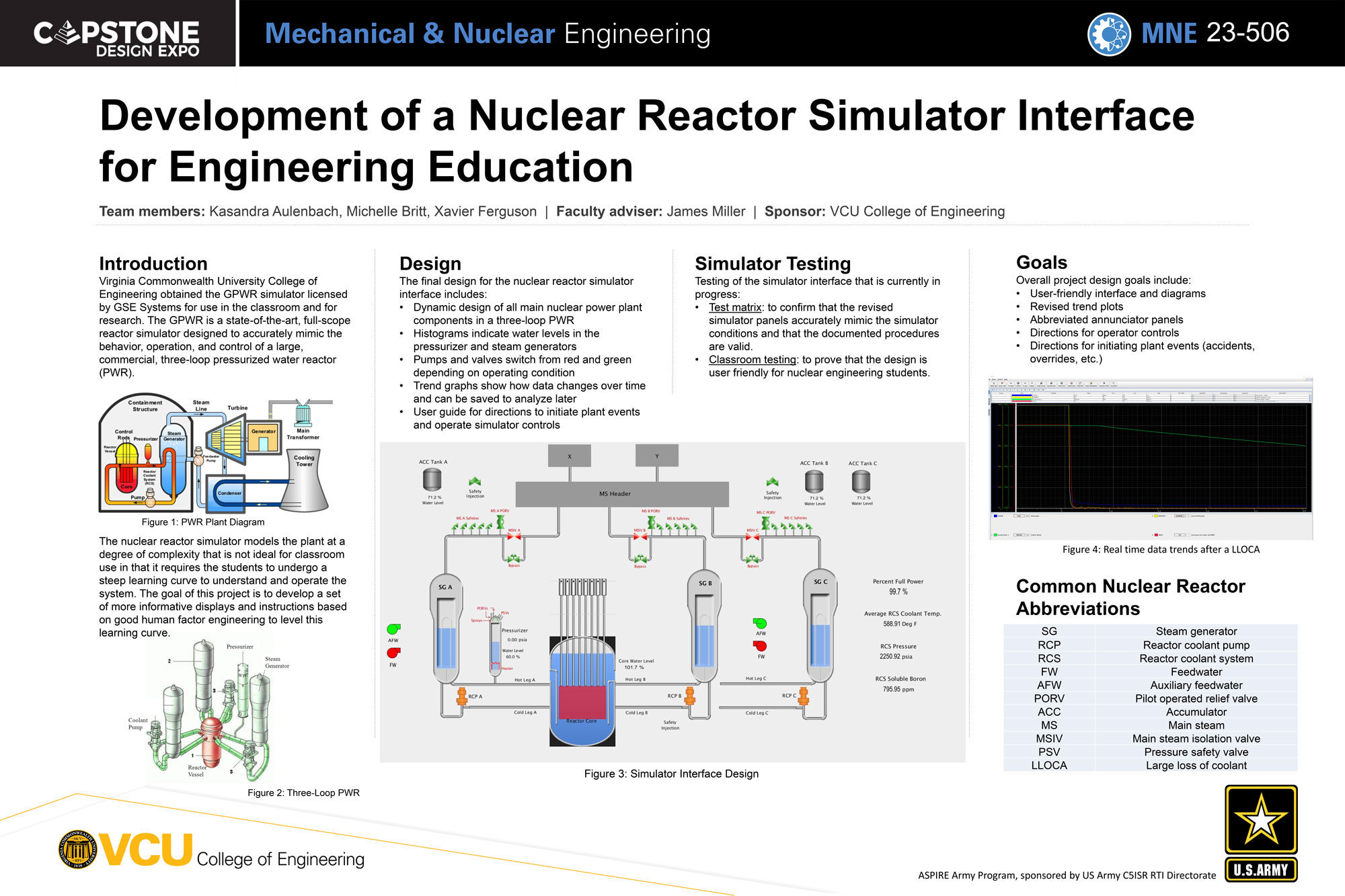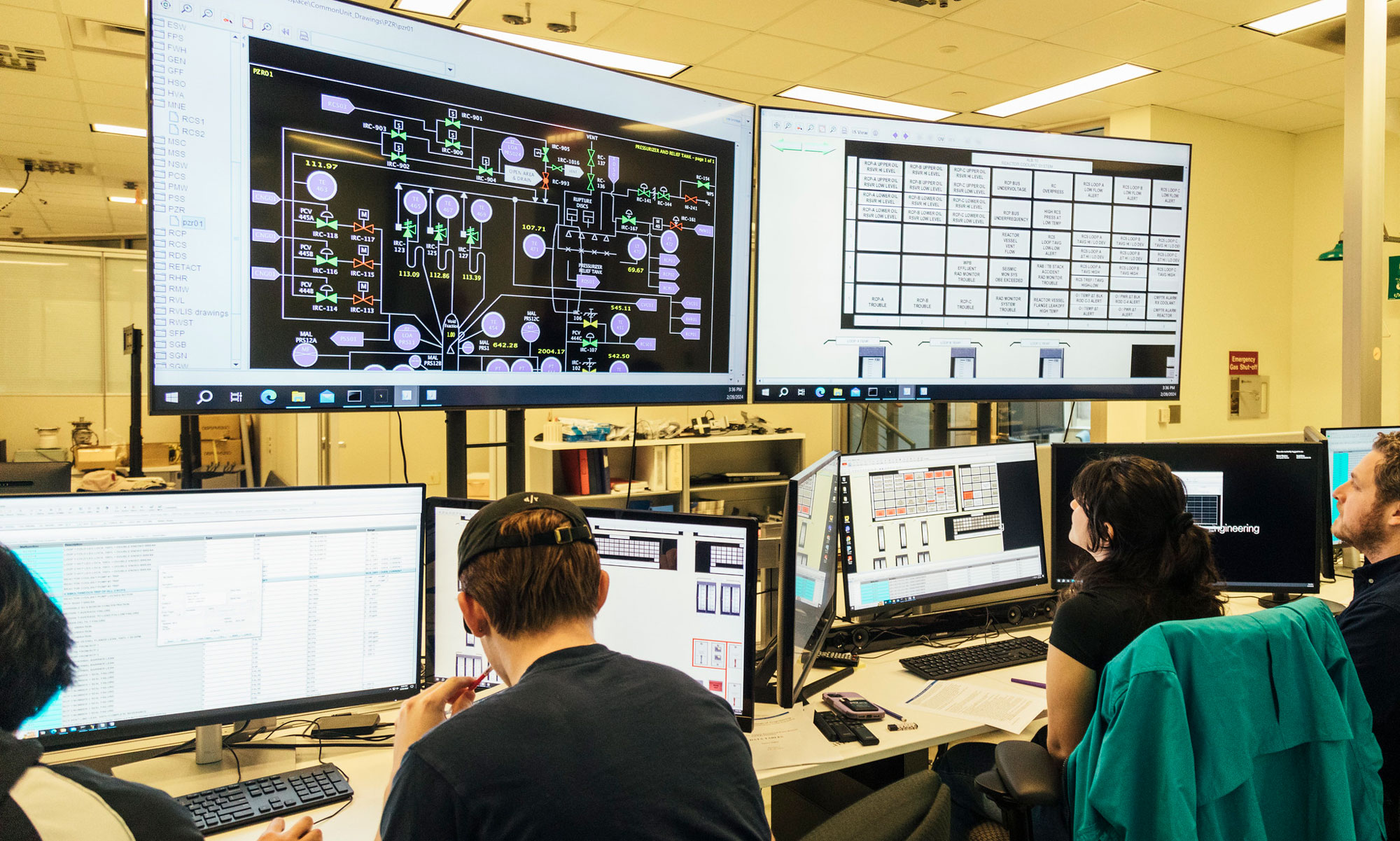Reactor simulators are an important component of nuclear power plants. They are used as training tools for operators at all commercial nuclear power stations in the United States . Modeled after the Harris pressurized water reactor (PWR) in North Carolina, the Virginia Commonwealth University (VCU) College of Engineering’s nuclear reactor simulator is an industry-standard tool used to educate engineering students interested in nuclear technology.
“In the nuclear industry, simulators are a critical part of everyday work. Giving our students exposure to systems like the PWR simulator will give them an edge upon entering the workforce,” said James Miller, mechanical and nuclear engineering professor in charge of the Nuclear Reactor Simulator Laboratory.
View this post on Instagram
Pressurized water reactors function by using the heat from the nuclear fission in the reactor core to produce steam, which moves the turbines that produce electricity. Managing the relationship between the nuclear reaction, heat transfer, pressure and energy production is an operator's responsibility, and why a complete understanding of the effects caused by control changes is critical.
“Every nuclear power station has a reactor simulator that replicates the actual plant control room,” says Miller. “Visually, the two are indistinguishable from one another. This design choice was made after the Three Mile Island incident, when regulators found operators had insufficient training and were unable to understand the implications of all the decisions they made. Today, reactor operators and other key personnel at US commercial nuclear reactors undergo continuing training at the station’s reactor simulators.”
Designed by GSE Solutions, the Generic PWR simulator is scheduled for use in three courses: Mechanical and Nuclear Engineering Practicum II (EGMN 203), Nuclear Power Plants (EGMN 359) for undergraduates and Nuclear Power Plants (EGMN 655) for graduate students. It was also the focus of a 2023 Capstone Design Expo project where students Kasandra Aulenbach, Michelle Britt and Xavier Ferguson designed new simulator monitor panels to make output of the simulator easier to interpret.

Nuclear power plant simulators are analog, with physical dials, switches and knobs. The VCU College of Engineering’s simulator is digital. Several windows contain a grouping of interactive controls that mirror those of actual PWRs. Students interact using a mouse and keyboard, but the controls themselves are exact digital representations of their analog counterparts. The Generic PWR simulator can be fully programmed with a variety of scenarios for students to respond to, like fluctuations in power demand or even a disastrous nuclear accident. It all happens in real time and responds exactly like a real PWR.
“We’ve had the simulator for just under two years now,” said Miller. “We’re using it as a teaching tool, but it can be used for so much more. Working with Dominion Energy, it’s possible to turn it into a resource for nuclear industry professionals in the greater Richmond area. It can even be applied to research.”
The Department of Mechanical and Nuclear Engineering provides undergraduate and graduate students with the opportunity to perform real-world research as soon as they enroll. Formed from a partnership with Dominion Energy, the department provides a foundation in nuclear energy, allowing students to choose their educational path with advanced coursework in either mechanical or nuclear engineering. Access to industry tools, like the Nuclear Reactor Simulator Laboratory, grounds education in practical instruction. Browse videos and recent news from the Department of Mechanical and Nuclear Engineering to discover how the College of Engineering at Virginia Commonwealth University prepares the next generation of scientists and engineers for the challenges of the future.
